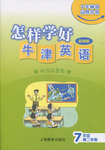题目内容
________ into buying the latest model of iPod, Mr.Darcy spent another$200 in that shop.
- A.Talking
- B.Having talked
- C.Talked
- D.To talk

 怎样学好牛津英语系列答案
怎样学好牛津英语系列答案While shopping, people sometimes can’t help being ________ into buying things that they don’t really need.
| A.encouraged | B.persuaded | C.advised | D.desired |
Don’t let yourself be ______ into buying things you don’t really want.
|
A.advocated |
B.clarified |
C.flashed |
D.persuaded |
第二节:Peter,Helen,Catherine,Elizabeth和Levin想根据各自在环保方面的兴趣(61—65)进行案例研究。阅读下面某杂志的专题报道摘要(A、B、C、D、E和F),选出适合他们研究的最佳案例,并在答题纸上将相应选项的标号涂黑。选项中有一项是多余选项。
61. Peter: Reducing plastic and other wastes through DTY
62. Helen : Making use of the heavy traffic to produce electricity
63. Catherine: Building a community without private cars
64. Elizabeth: Building houses with recycled materials and energy-efficiency systems
65. Levin: Developing a new type of urban car which bums less gas
|
A |
B |
|
Vauban We know cars are terrible polluters, but would you give yours up? Vauban, a community in southwestem Germany, did just that, and its 5,000 citizens are doing fine. Most streets are free of vehicles, and there are generous green spaces and good public-transport links, including fast buses and bicycle paths. When,, people must drive, they can turn to car-sharing clubs. All the citizens had the chance to plan their own city," says Andreas Delleke, an energy expert, "and it's just how we wanted it to be. "
|
Denmark During the period of gas shortage in the early, 70s, Denmark decided to become self-sufficient ( 自足). So they began a few projects making smart investments along the way. On the island of Samsoe, local families, fishermen and farmers bought wind turbines (涡轮机],) to produce their own energy. Within seven years these turbines were completely paid for. And can you believe just one of wind turbines produces enough electricity for 600 households? |
|
C |
D |
|
Trey Parker and Matt Stone Trey Parker and Matt Stone, creators of South Park, have built a sustainable (可持续的) castle with outer siding and inner flooring of recycled wood, recycled carpeting, high-efficiency boiler systems. "I think more and more today, people are willing to make a statement about the Earth and how they want to proteet it," Michael Rath, home designer and builder says. "For high-end homes in this valley, this is entirely consistent with what they cost. " |
P-NUT Who doesn't love the name P-NUT- short for Personal-Neo Urban Transport? It's Honda's latest attempt to create a tiny footprint for a new urban vehicle. This little P-NUT is unique. With a central driving position, the car is designed to move in tight settings. The l 1-foot micro car will seat three with two rear-seat passengers behind the driver. "The P-NUT conce, pt explores the packaging and design potential for a vehicle designed for the city lifestyle," said Dave Marek, a Honda design Spokesman. |
|
E |
F |
|
Israel Company Is it possible that annoying rash hour traffic could become a source of renewable energy? Israel's Technion Institute of Technology claims that if we placed special generators ( 发电机 ) under roads, railways, and runways -- we could harvest enough energy to mass-produce electricity. A trial process has been used on a smaller scale, in dance clubs for instance, where the pounding feet of dancers light up the floor. "We can produce electricity anywhere there is a busy road using energy that normally goes to waste," said Uri Amit, chairman of Israel's Technion . Institute Of Technology. |
Coffee Coffee. Some of us can't start our day without it, and we don't mind waiting 10 minutes in line for it. Here is the most effective tip to make you a superstar in environment protection. Get a coffee machine for your home or office, or persuade your company into buying one. ( Tell them it will improve productivity. ) Skip the coffee line on the way to work and make something that is better-tasting and much better for your wallet. Plus, you Won't need those plastic cups or carrying cases that jnst get thrown away. Better yet, use your favorite travel mug. |